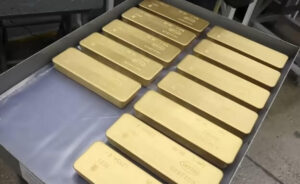 When thinking about investing in real estate, the purchase of houses, apartments, or commercial properties may come to mind. However, there are ways to enter the real estate market without having to buy a property. In this article, we share some ways to invest in real estate through the financial markets.
When thinking about investing in real estate, the purchase of houses, apartments, or commercial properties may come to mind. However, there are ways to enter the real estate market without having to buy a property. In this article, we share some ways to invest in real estate through the financial markets.
What Is Investing In Property?
Investing in real estate generally falls into two categories: physical investments and investments that do not require physical ownership of the property.
Physical investments involve the purchase of residential property, commercial property, or land. Investors gain (or lose) differently with physical real estate investments.
Aside from traditional brick-and-mortar ownership, it is possible to invest in property through various financial instruments. Let’s look at some of these in more detail in the next section.
Add The Property To Your Portfolio
In addition to investing in physical properties, investors can experience capital gains (or losses) from real estate in the financial markets. Some popular financial tools for adding real estate to your portfolio are real estate investment trusts (REITs), real estate exchange-traded funds (ETFs), and shares of companies involved in the sector.
Reits
A REIT (SIIQ) is a company that typically generates income by producing and owning real estate. Some REITs are publicly traded and some are not. By investing in REITs, investors indirectly invest in the real estate the company owns. As with the common stock of a company, investing in REITs usually gives the investor the right to vote.
Unlike other real estate companies, REITs are not engaged in developing properties to resell them. REITs own or rent real estate and pay the rental income to investors as a result. This is called dividend-based income. These properties can vary and can include everything from office buildings, hotels, shopping malls, and homes, to data centers and cell towers.
Since rents are usually stable, the income stream from a REIT investment can also be considered relatively stable under normal market conditions. However, we are currently in a period where market conditions are not normal due to the implications of Covid-19, which can ultimately impact REIT income streams.
 Real Estate Etfs
Real Estate Etfs
If you are not familiar with ETFs, they are a type of product that follows an index, commodity, bond, or composition of products. The performance of an ETF follows the price movements of the products underlying the fund. In this case, real estate ETFs include a basket of real estate stocks. Often, the components of these funds include REITs and can be designed to reflect an underlying REIT index.
Some of the main advantages of ETF REITs, and ETFs in general, are that they trade like stocks on the stock market and therefore can be more flexible than other investment funds and can have lower costs because they are typically passively managed. They also allow investors to gain exposure to a diverse range of real estate or REIT stocks with a single investment.
Real Estate Stocks
If you are interested in investing in you can also do so with real estate stocks. There is a wide range of possibilities for gaining real estate exposure with equities. One way is to invest in shares of companies that own real estate and engage in activities similar to REITs but do not meet the criteria to be considered REITs.
…



